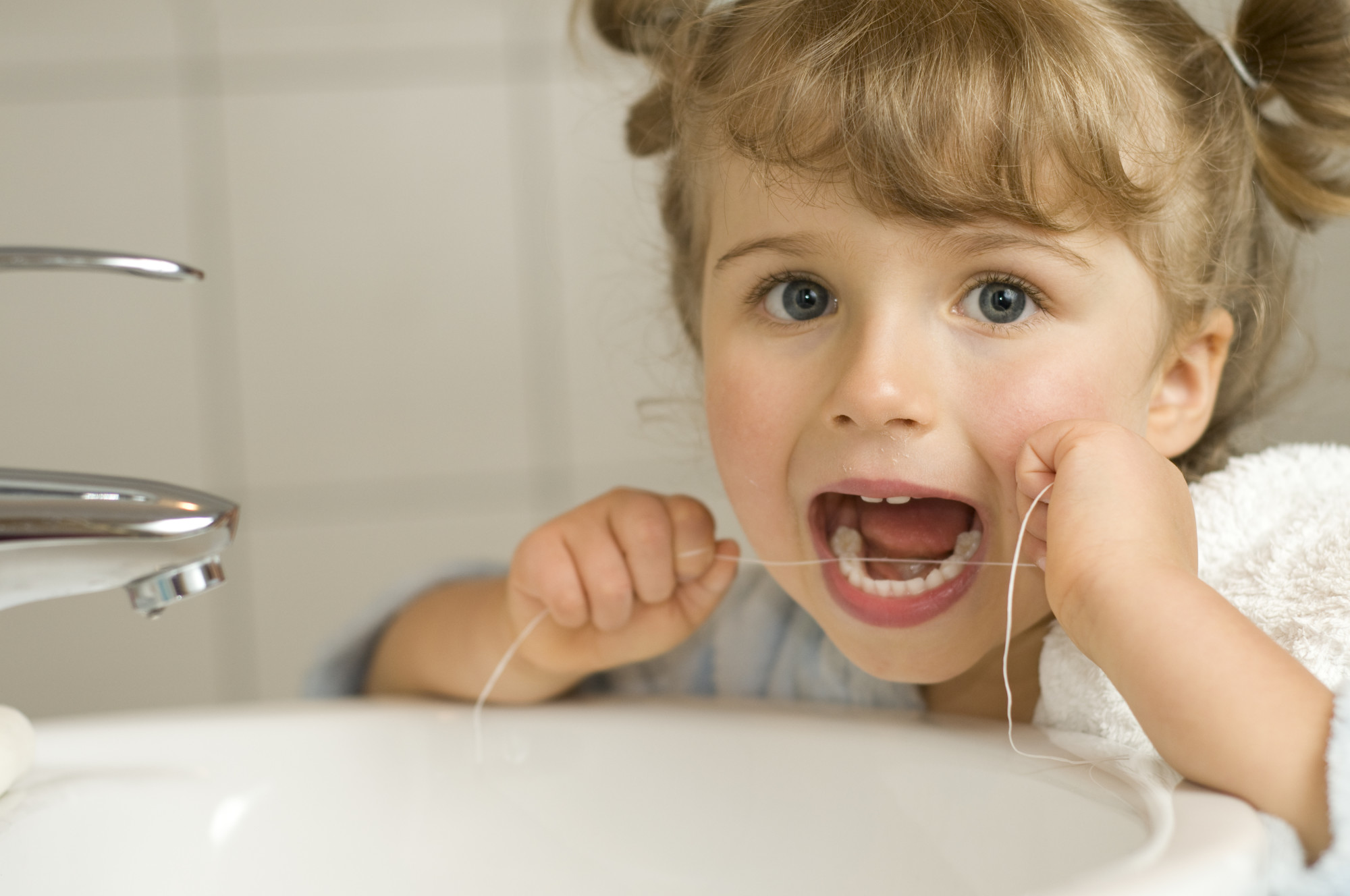
Establishing effective oral hygiene habits for children can often feel like a delicate dance, balancing instruction with gentle encouragement. While brushing is typically introduced early on, the discussion around flossing often emerges later, sometimes with a degree of uncertainty regarding its necessity or the appropriate time to begin. Many parents might assume that flossing is only critical once all permanent teeth have erupted, or perhaps even later in adolescence. This perspective, however, overlooks the fundamental purpose of flossing: to clean the surfaces between teeth where a toothbrush simply cannot reach. These interdental spaces are prime breeding grounds for plaque and food particles, leading to cavities and gum inflammation even in very young children. Understanding the nuances of when and how to introduce flossing is not just about preventing future problems; it’s about proactively safeguarding a child’s developing oral health from the earliest possible stage. The decision of when to start flossing your child’s teeth isn’t arbitrary; it’s a strategic move in their overall dental care regimen, directly impacting the long-term health and integrity of their smile.
The Appearance of Adjacent Teeth: A Key Indicator
The most practical and commonly cited indicator for introducing flossing is the appearance of adjacent teeth, which serves as a key indicator. As soon as two teeth in a child’s mouth are touching each other, creating a contact point, that’s the moment flossing becomes necessary. A toothbrush’s bristles, no matter how soft or small, cannot effectively clean these tight spaces. This often happens with the eruption of the primary molars, typically between the ages of two and three. Even if only two teeth are touching in one small area of the mouth, that particular spot requires flossing. It’s not about waiting for all teeth to touch, but rather identifying any single instance where interdental cleaning becomes physically impossible with a brush. Ignoring these tight contact areas allows plaque to accumulate undisturbed, significantly increasing the risk of cavities forming between the teeth, areas often referred to as “interproximal cavities.” Therefore, constant vigilance regarding the appearance of adjacent teeth is paramount for parents.
Why Brushing Alone Isn’t Enough: Addressing Hidden Plaque
A common misconception is that diligent brushing suffices, but why brushing alone isn’t enough quickly becomes apparent when considering addressing hidden plaque. While brushing effectively cleans the outer and inner surfaces of teeth, it simply cannot reach the tight spaces where teeth touch side-by-side. These areas are notorious for trapping food particles and harboring plaque, a sticky film of bacteria. If left undisturbed, this plaque produces acids that erode tooth enamel, leading to decay. Moreover, undisturbed plaque can harden into tartar, which further irritates gums and contributes to gum disease. Flossing acts as the indispensable tool that reaches these otherwise inaccessible surfaces, physically dislodging plaque and food debris before they can cause harm. It’s a complementary action, not a redundant one, ensuring comprehensive cleaning that brushing alone can never achieve. Understanding the limitations of brushing highlights the critical role flossing plays in addressing hidden plaque and maintaining optimal oral health.
Preventing Interproximal Cavities: Stopping Decay in Its Tracks
The primary objective of early flossing is preventing interproximal cavities, effectively stopping decay in its tracks. These cavities, forming between teeth, are particularly insidious because they are often difficult to detect in their early stages. They can progress significantly before becoming visible or causing pain, often requiring more extensive dental work once discovered. By regularly flossing, parents physically remove the plaque and food particles from these vulnerable surfaces, significantly reducing the acid attacks that lead to decay. This proactive removal is crucial, especially in primary teeth, as cavities can spread rapidly. Furthermore, decay between baby teeth can easily spread to the developing permanent teeth beneath them, causing irreparable damage even before eruption. Therefore, consistent flossing is not just about avoiding immediate fillings; it’s about a strategic intervention for stopping decay in its tracks and safeguarding the integrity of both primary and future permanent dentition.
Safeguarding Gum Health: Beyond Just Teeth
Beyond the teeth themselves, flossing plays a crucial role in safeguarding gum health, extending its benefits beyond just teeth. The accumulation of plaque and food debris along the gumline and between teeth can irritate the gingiva, leading to inflammation known as gingivitis. Symptoms include red, swollen, and sometimes bleeding gums. While gingivitis is reversible with good oral hygiene, if left untreated, it can progress to more severe forms of periodontal disease. Even in young children, early signs of gum inflammation can appear due to poor interdental cleaning. Flossing effectively removes the irritants from these sensitive areas, promoting healthy gum tissue. Healthy gums provide a stable foundation for teeth and are crucial for overall oral well-being. Focusing on safeguarding gum health ensures that a child’s entire oral ecosystem remains robust, underscoring that the benefits of flossing reach beyond just teeth.
Teaching Proper Technique: Early Habits for Lifelong Skills
Initiating flossing early also provides the ideal opportunity for teaching proper technique, instilling early habits for lifelong skills. While parents will initially perform the flossing for their young children, demonstrating the correct method from the outset is vital. This includes using about 18 inches of floss, wrapping it around middle fingers, and gently guiding it between teeth with index fingers and thumbs. The crucial “C-shape” motion around each tooth and gentle movement below the gumline should be emphasized. As children develop fine motor skills, typically around ages six to eight, they can gradually begin to take over the flossing process, with parental supervision. Early instruction and consistent practice help internalize these techniques, making them second nature as they grow older. This hands-on guidance fosters autonomy and confidence, transforming what could be a complex task into a routine lifelong skill, ensuring they carry effective oral hygiene practices into adulthood.
Incorporating Flossing into Routine: A Seamless Integration
Making flossing a non-negotiable part of daily oral care requires incorporating flossing into routine, aiming for a seamless integration. Just as brushing becomes an expected part of morning and bedtime rituals, flossing should be introduced similarly. Consistency is paramount. Choosing a specific time, perhaps before brushing at night, helps establish a predictable pattern. Children thrive on routine, and when flossing is presented as a normal, expected step, rather than an optional extra, resistance is often minimized. Using visual aids, like a chart or a simple checklist, can help young children track their progress and understand the sequence of oral hygiene steps. The goal is to embed flossing so deeply within their daily rhythm that it becomes an almost automatic action, eliminating the need for constant reminders. This approach to a seamless integration ensures that flossing becomes a natural and indispensable component of their oral health regimen.
Choosing the Right Tools: Child-Friendly Options
The market offers a variety of tools, and choosing the right tools provides child-friendly options that can make flossing easier and more appealing. Traditional string floss can be challenging for little hands and developing dexterity. Floss picks, with their pre-strung floss attached to a small handle, are often a far more practical and child-friendly alternative. They are easier for parents to maneuver in a child’s mouth and, as children grow, can be simpler for them to manage independently. Some floss picks even come in fun shapes, colors, or with cartoon characters, adding an element of playfulness. Water flossers, while not a substitute for traditional flossing, can be a supplementary tool, especially for older children or those with braces, helping to dislodge food particles. Experimenting with different child-friendly options can significantly reduce resistance and increase cooperation, turning a potentially frustrating task into a more manageable and even enjoyable part of their daily routine.
Addressing Resistance: Patience and Positive Reinforcement
It’s common to encounter addressing resistance, requiring patience and positive reinforcement. Children may initially resist flossing due to unfamiliarity, discomfort, or simply a lack of understanding. Forcing the issue can create negative associations. Instead, approach it with patience and a positive attitude. Explain in simple terms why flossing is important, perhaps using a story about “food bugs” hiding between teeth. Make it a fun experience, using a favorite song during the process or celebrating its completion with a sticker. Reward charts can be highly effective, offering small incentives for consistent flossing. If a child expresses discomfort, ensure the technique is gentle and that you’re using appropriate, soft floss. Remember, consistency in a calm and encouraging manner will yield better long-term results than battles. This approach, centered on patience and positive reinforcement, transforms potential conflict into a shared journey toward better oral health.
Parental Involvement: A Crucial Guiding Hand
For many years, parental involvement remains a crucial guiding hand in a child’s flossing journey. Until a child develops the necessary fine motor skills and understanding, typically around 8 to 10 years old, parents will need to perform or at least closely supervise their flossing. This hands-on assistance ensures thorough cleaning and reinforces proper technique. It’s not a task to delegate entirely too early. Even after a child starts flossing independently, occasional checks and gentle reminders can be beneficial. Leading by example is also powerful; children are more likely to adopt habits they see their parents practicing. This ongoing crucial guiding hand demonstrates the importance of flossing, providing consistent support and instruction that lays the groundwork for a child’s lifelong commitment to their oral health.
Long-Term Benefits: A Lifetime of Healthy Smiles
The seemingly small act of introducing flossing early has immense long-term benefits, leading to a lifetime of healthy smiles. By consistently cleaning between teeth from a young age, parents significantly reduce the incidence of cavities and gum disease throughout their child’s life. This early preventive care can mean fewer dental treatments, less discomfort, and lower dental costs in the long run. More importantly, it fosters a proactive mindset towards oral health, instilling habits that will serve them well into adulthood. A child who learns the importance of flossing early is more likely to carry that knowledge and practice forward, maintaining excellent oral hygiene throughout their life. It’s an investment that pays dividends in terms of overall health, confidence, and ultimately, a lifetime of healthy smiles, highlighting the profound impact of this simple daily ritual.
